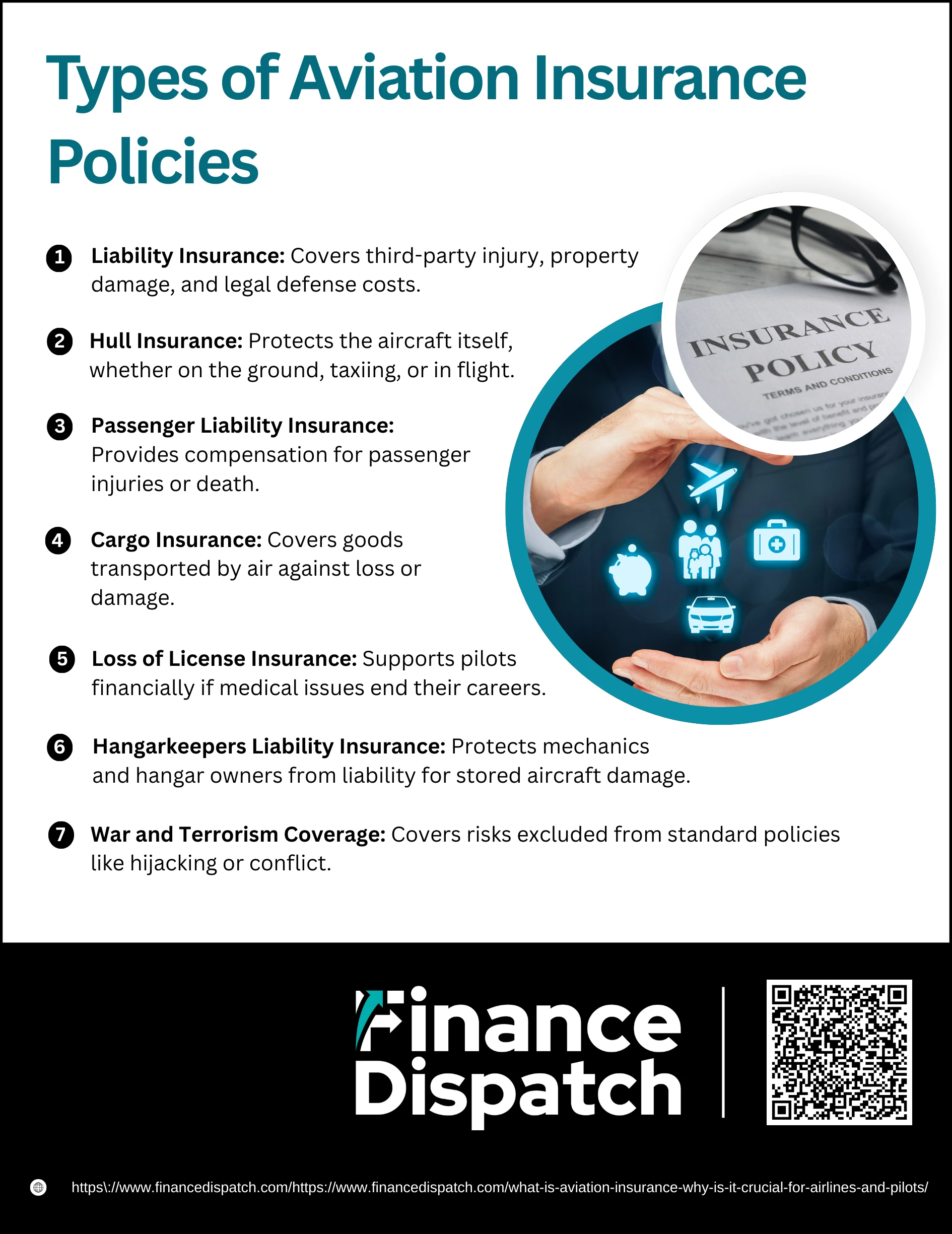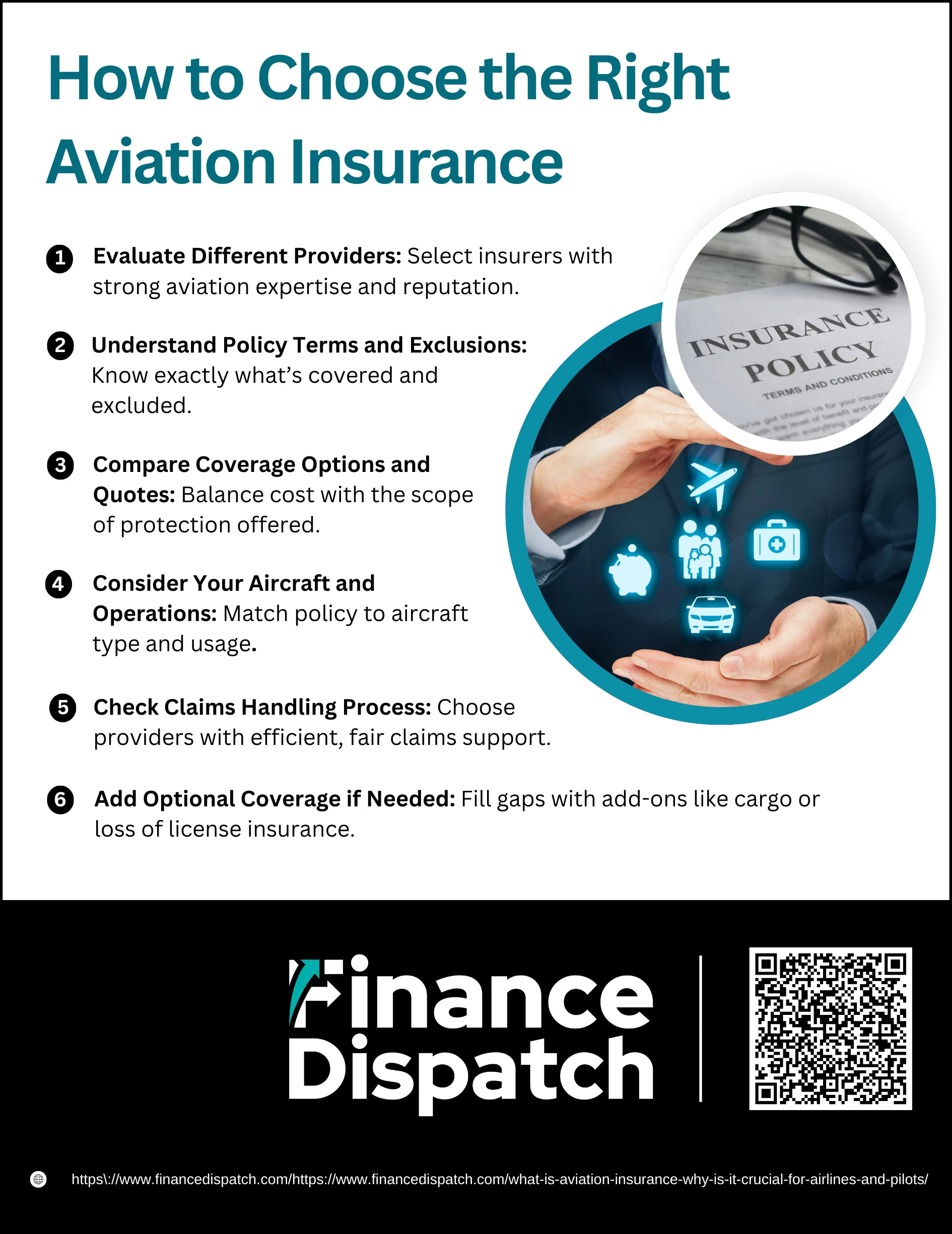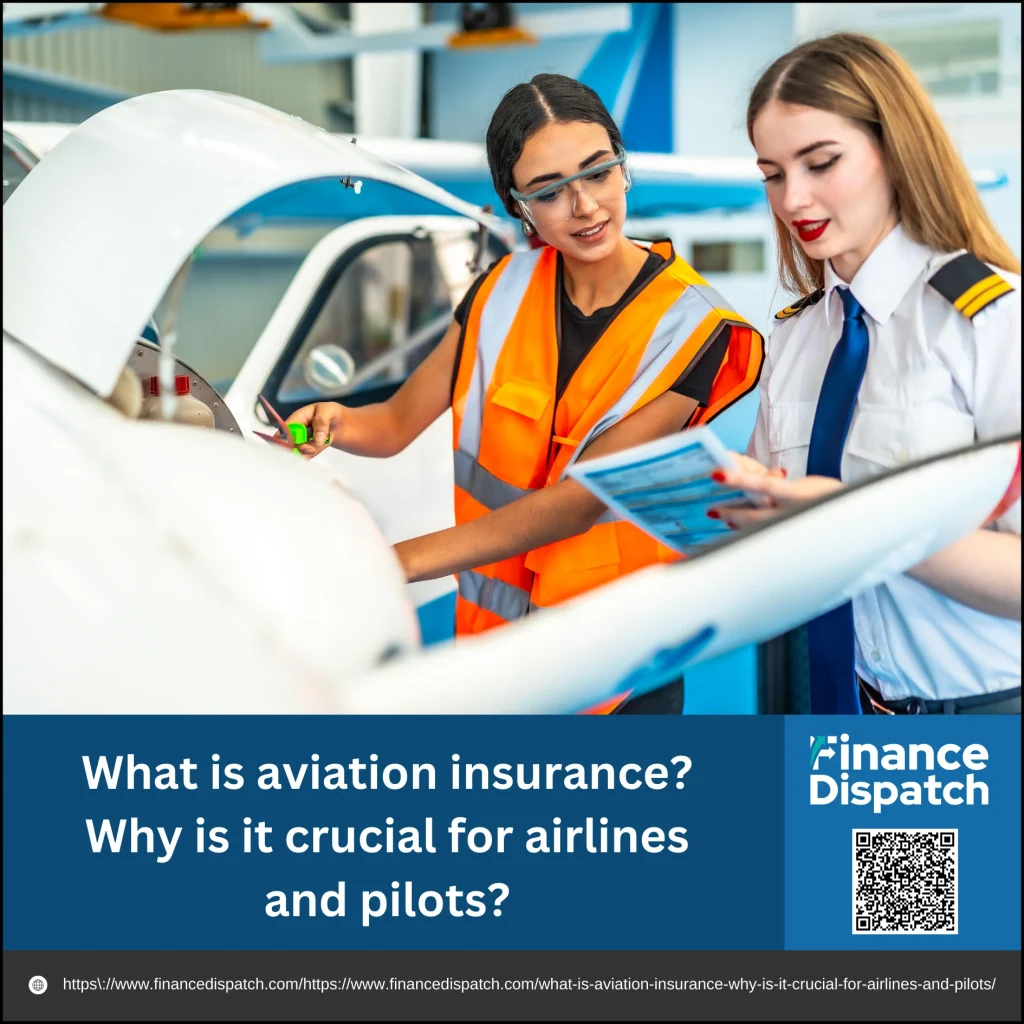Flying may symbolize freedom and progress, but it also carries risks that can quickly turn costly if not properly managed. This is where aviation insurance steps in as a vital safeguard. Aviation insurance is a specialized form of coverage designed to protect aircraft owners, pilots, and airlines from the financial fallout of accidents, damage, or liability claims. Beyond being a regulatory requirement in many countries, it provides peace of mind to those operating in one of the world’s most high-risk industries. For pilots, it ensures personal protection and security in the skies, while for airlines, it safeguards valuable aircraft, passengers, crew, and business operations. Understanding what aviation insurance is and why it matters helps both individuals and companies navigate the skies with confidence and responsibility.
What is Aviation Insurance?
Aviation insurance is a specialized type of coverage designed to address the unique risks involved in operating aircraft. Unlike standard insurance policies, it protects against financial losses that may arise from accidents, damage to the aircraft, passenger injuries, cargo loss, or third-party property damage. This insurance is essential for both private pilots and commercial airlines, as it ensures that the high costs of aircraft repairs, legal liabilities, and unexpected incidents do not fall solely on the operator. By providing a safety net tailored to aviation’s complex environment, aviation insurance enables pilots and airlines to focus on safe and efficient operations while maintaining financial security.
 Why Aviation Insurance is Crucial for Airlines and Pilots
Why Aviation Insurance is Crucial for Airlines and Pilots
Aviation is a field where the stakes are high—aircraft are expensive, human lives are involved, and operations face constant exposure to risk. For both airlines and pilots, aviation insurance is not just about ticking a compliance box; it is about ensuring financial stability, protecting passengers and crew, and preserving trust in aviation operations.
Key Reasons Aviation Insurance is Crucial:
1. Financial Protection
Aircraft maintenance and replacement costs can reach millions of dollars. In the event of an accident, collision, or natural disaster, aviation insurance ensures that these expenses do not fall directly on the pilot or airline. This financial safety net allows operators to recover quickly without crippling losses.
2. Legal Compliance
Many aviation authorities across the world require a minimum level of insurance coverage to grant operating licenses. Compliance with these regulations protects airlines and pilots from legal penalties while ensuring they meet industry safety standards.
3. Passenger and Crew Safety
Accidents can lead to medical emergencies for those on board. Aviation insurance provides coverage for medical expenses, disability benefits, or even loss of life compensation. This guarantees that passengers and crew receive the support they need, reinforcing the airline’s or pilot’s responsibility toward those in their care.
4. Third-Party Liability Coverage
Aviation incidents often affect people and property on the ground, such as damaged buildings, injured bystanders, or destroyed crops. Liability insurance ensures that these third-party claims are handled without financially devastating the pilot or airline, helping maintain accountability and goodwill.
5. Reputation and Trust
In an industry where confidence is everything, having comprehensive insurance shows responsibility and professionalism. For airlines, it reassures passengers, investors, and regulators. For pilots, it demonstrates a commitment to safety and preparedness, building credibility within the aviation community.
 Types of Aviation Insurance Policies
Types of Aviation Insurance Policies
Aviation insurance policies are designed to cover specific risks in different situations, making it essential for both airlines and pilots to understand what each type offers. Choosing the right mix ensures comprehensive protection, financial stability, and compliance with legal standards.
Main Types of Aviation Insurance Policies:
1. Liability Insurance
This is the foundation of aviation insurance, covering bodily injury or property damage caused to third parties by an aircraft. For example, if an aircraft damages farmland during an emergency landing or injures bystanders on the ground, liability insurance handles the financial claims. It also covers legal defense costs, which can be just as expensive as the damages themselves.
2. Hull Insurance
Hull insurance protects the aircraft itself from physical damage. It comes in three main forms:
- Ground Not in Motion – Covers damage when the aircraft is parked or stored, such as theft, fire, or storms.
- Ground in Motion – Protects while the aircraft is taxiing but not yet airborne.
- In-Flight Insurance – Provides the broadest coverage, protecting the aircraft during takeoff, flight, and landing.
Given the high cost of aircraft repairs and replacements, hull insurance is a must-have for both private owners and airlines.
3. Passenger Liability Insurance
Designed to protect airlines and pilots from claims made by passengers injured during a flight, whether due to turbulence, emergency landings, or accidents. This coverage ensures that medical bills, compensation, or legal settlements do not overwhelm operators financially. It is particularly vital for commercial airlines that carry hundreds of passengers daily.
4. Cargo Insurance
Cargo insurance covers goods being transported by air against loss or damage. For example, if severe weather damages electronics or perishable items during transport, this policy compensates the shipper. It’s crucial for freight companies and airlines, as even minor losses can translate into significant financial claims from customers.
5. Medical Coverage
Aviation carries risks for both crew and passengers. Medical coverage helps pay for hospitalization, emergency treatment, or disability caused by accidents. For pilots, this ensures access to care without personal financial strain; for airlines, it demonstrates responsibility toward passengers and employees.
6. Loss of License Insurance
Pilots depend on their licenses for their livelihood. If a pilot loses their license due to medical issues—such as vision problems or chronic illness—this policy provides financial support. It’s especially valuable for commercial pilots who cannot easily shift careers without years of retraining.
7. Hangarkeepers Liability Insurance
Tailored for fixed-base operators (FBOs), mechanics, and hangar owners, this coverage protects them if aircraft stored or serviced in their facilities are damaged. For instance, if a hangar roof collapses or an error during maintenance damages a client’s aircraft, this insurance covers the liability.
8. War and Terrorism Coverage
Standard aviation insurance policies often exclude acts of war, hijacking, and terrorism. Airlines operating in politically unstable regions or international conflict zones need this additional coverage to protect against catastrophic losses. It ensures that businesses remain financially secure even in extreme scenarios.
Key Coverage Areas Explained
Aviation insurance goes beyond just protecting the aircraft—it provides a wide safety net that covers pilots, passengers, cargo, and even third parties affected by aviation activities. These coverage areas ensure that all critical aspects of aviation operations are financially safeguarded, allowing airlines and pilots to operate with confidence.
| Coverage Type | What It Protects Against |
| Liability Coverage | Legal claims for injury, death, or property damage caused by the aircraft |
| Hull Insurance | Physical damage to the aircraft itself, whether on the ground, taxiing, or in flight |
| Medical Coverage | Hospitalization, emergency treatment, or disability costs for pilots, crew, or passengers |
| Passenger Liability | Compensation for injuries or death sustained by passengers during flights |
| Cargo Insurance | Damage, loss, or theft of goods transported by air |
| Legal Liability | Coverage for legal defense expenses in case of lawsuits following aviation incidents |
| Personal Effects | Protection for pilots’ or passengers’ belongings such as navigation tools, luggage, or electronics |
Factors Influencing Aviation Insurance Premiums
The cost of aviation insurance is not fixed—it varies depending on several risk-related factors. Insurers carefully evaluate the pilot, aircraft, and operational environment before deciding the premium. Understanding these factors helps airlines and pilots manage risks better and even reduce costs through safer practices and informed choices.
Key Factors That Influence Premiums:
1. Pilot Experience and Training – More flight hours, advanced certifications, and a clean safety record usually lead to lower premiums.
2. Aircraft Type and Value – Larger, faster, or high-value aircraft come with higher insurance costs due to increased repair or replacement expenses.
3. Intended Usage – Whether the aircraft is used for private leisure, training, cargo transport, or commercial flights affects the level of risk and cost.
4. Geographical Location and Routes – Operating in congested airspace, remote areas, or regions prone to severe weather raises premium rates.
5. Maintenance and Safety Record – Well-maintained aircraft with up-to-date records and safety features often qualify for discounts.
6. Coverage Limits and Deductibles – Higher coverage limits increase premiums, while higher deductibles can reduce costs but increase out-of-pocket risk.
7. Claims History – Past incidents or frequent claims may result in insurers charging higher premiums.
 How to Choose the Right Aviation Insurance
How to Choose the Right Aviation Insurance
Choosing the right aviation insurance is not just about finding the lowest premium—it’s about securing coverage that matches the risks you face as a pilot, aircraft owner, or airline operator. Since every flight involves people, equipment, and environments that carry potential hazards, selecting the right policy ensures peace of mind and long-term financial protection.
Steps to Choose the Right Aviation Insurance:
1. Evaluate Different Providers
Not all insurance companies have equal expertise in aviation. Look for insurers with a strong reputation in the aviation industry, proven financial strength, and positive feedback from pilots or airlines. A provider experienced in handling aviation claims is more likely to understand the unique risks of flying and offer tailored solutions.
2. Understand Policy Terms and Exclusions
Reading the fine print is essential. Policies may exclude certain risks, such as war, terrorism, or mechanical wear and tear. Knowing what is and isn’t covered helps avoid nasty surprises when filing a claim. Pay close attention to deductibles and coverage limits so you’re not left underinsured.
3. Compare Coverage Options and Quotes
Cost matters, but the cheapest policy is not always the best. Request quotes from multiple insurers and compare the scope of coverage side by side. Look at whether liability, hull damage, passenger protection, and additional risks are included. A slightly higher premium might save you from massive out-of-pocket expenses in the long run.
4. Consider Your Aircraft and Operations
Coverage needs vary depending on the type of aircraft and how it is used. A private pilot flying recreationally will need different coverage compared to an airline running international passenger flights or a cargo company transporting goods. Make sure the policy reflects your operational environment, from single-engine planes to large commercial fleets.
5. Check Claims Handling Process
A smooth claims process is critical after an incident. Research how quickly and fairly the insurer settles claims. Reviews and recommendations from other aviators can give insight into whether the company handles claims efficiently or creates unnecessary delays. Good claims support can reduce downtime and financial strain.
6. Add Optional Coverage if Needed
Standard aviation policies may not cover everything you need. Optional add-ons like cargo insurance, personal effects coverage, hangarkeepers liability, or loss of license insurance can provide more comprehensive protection. Tailoring these extras to your specific risks ensures that no gaps are left in your safety net.
Conclusion
Aviation insurance is far more than just a regulatory requirement—it is the backbone of safety and financial security for both airlines and pilots. From covering costly aircraft repairs and passenger medical expenses to protecting against third-party liabilities and legal claims, it provides a crucial safety net in one of the world’s most risk-intensive industries. For airlines, it safeguards large fleets, business continuity, and reputation, while for pilots, it ensures personal protection and peace of mind every time they take to the skies. By carefully choosing the right policy and coverage, aviation professionals can focus on what truly matters—safe, confident, and responsible flying.



